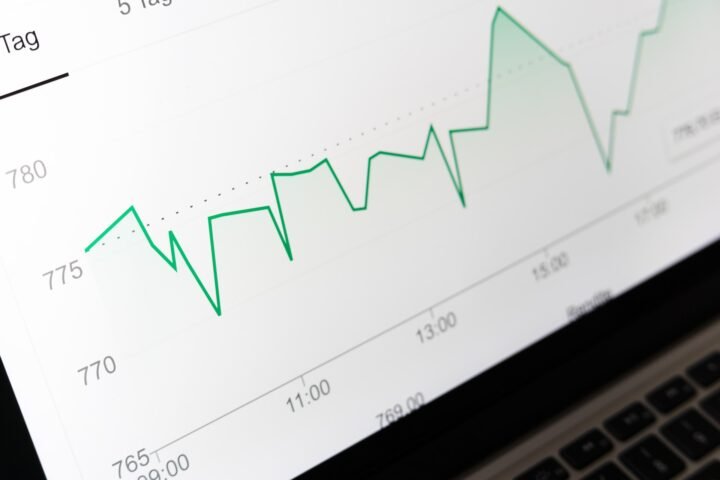Embracing A New Chapter: Life After Bankruptcy Chapter 7
What does life after bankruptcy chapter 7 look like? Financial hardships can strike anyone at any time. When debt becomes unbearable, filing for bankruptcy can provide a fresh start. How can one recover outstanding debt and rebuild a solid financial foundation? This guide explores the journey to financial recovery after bankruptcy, with insights on how to bounce back stronger and more financially aware.

Financial Resurgence: Bankruptcy Chapter 7
Bankruptcy, particularly Chapter 7, offers individuals a chance to discharge most, if not all, of their debts, providing them with a clean slate to start afresh and rebuild credit again. This process, while daunting, can be the first step towards financial resurgence.
Bankruptcy offers a fresh start, not a financial death sentence. It’s about embracing new financial habits, reestablishing your credit history and a fresh financial start building a secure future.
Post-Bankruptcy Life: The Reality
After filing for bankruptcy, life does change, but not necessarily for the worse. Understanding these changes can help individuals make the most of their post-bankruptcy life.
The most important thing to remember is that bankruptcy does not mean financial failure. It is a way to get back on track and start fresh. To make the most of the new chapter of life, individuals should focus on creating a budget, establishing an emergency fund, rebuilding credit, and building up a savings account. It is also important to start repairing credit scores by making all payments on time and avoiding taking out any additional loans or credit cards.
Additionally, individuals should take advantage of the new financial freedom by researching investment opportunities such as stocks or real estate that can help them build wealth in the long run. With hard work and dedication, individuals can come out of bankruptcy stronger than ever before and ready to tackle any future financial challenges.
The Challenges

Declaring bankruptcy can indeed make it difficult to secure any car loans, or mortgages in the future, at least for some time. It also means revealing private financial information to the bankruptcy trustee or court, and your finances will be somewhat out of your control.
Secured Credit Card And Rebuilding Credit Report
Fortunately, there are steps individuals can take to start rebuilding credit. One of the first steps is to apply for a secured credit card. With this type of card, individuals are required to put down a deposit that is equal to their credit limit. As they use the card responsibly and make payments on time, their credit score should gradually increase.
Additionally, individuals can also look into taking out a small loan from a bank or other financial institution and using it responsibly in order to build up their credit score. Finally, signing up for automatic payments or setting reminders for when bills are due is a great way to stay on top of payments and avoid late fees or penalties that could negatively impact your credit score.
The Freedom
However, there’s also freedom to be found in post-bankruptcy life. Your credit begins to heal after a bankruptcy filing, and bankruptcy can offer an opportunity to repair damaged credit. It also provides protection against future actions creditors might try to take for the remaining debts not included in the bankruptcy.
The Responsibilities
The freedom post-bankruptcy isn’t without obligations. For instance, non-dischargeable debts must still be paid, and smart decisions about using credit card companies must be made to avoid repeating past mistakes.
Navigating Life After Bankruptcy Chapter 7

Rebuilding financial stability after bankruptcy involves careful planning and disciplined financial habits. Here’s a roadmap to navigate through this period effectively.
Save All Bankruptcy Paperwork
Keep all documents related to your bankruptcy case, as future lenders online banks, or credit unions may request these. Also, these documents will come in handy if a debt collector approaches you about a debt that was discharged in bankruptcy.
Construct a Solid Budget
Establish a strict budget for monthly expenses and open a savings account for financial emergencies. This will help manage spending and reduce the likelihood of accumulating debt.
Focus on Earning and Saving
If you don’t already have a job, prioritize securing one as soon as possible. Stable housing and secured credit card and employment histories demonstrate to creditors that you’re reliable and can manage your finances responsibly.
Establish an Emergency Fund
Creating an emergency fund will both save money and help you avoid falling back into debt in case of unexpected financial requirements. Even if you can only save a small amount each month, it’s essential to start building up this fund as soon as possible.
Pay Bills on Time
To keep your credit score and report clean after bankruptcy, it’s crucial to make all monthly payments and other obligations on time.
Keep a Bank Balance
Open and maintain a new checking account or savings account. Even if you’ve had accounts charged-off in the past, many banks offer second-chance options for individuals in such situations.
Gradually Rebuild Your Credit Scores
Start rebuilding your credit by responsibly using a credit card and consistently making on-time payments. Should you find yourself slipping back into debt, stop using the credit card and start a repayment plan.
Monitor Your Credit Reports
Regularly checking your credit reports is essential to ensure all information on credit accounts is correct. If you notice any discrepancies on credit report, notify the credit bureaus and the company that reported the incorrect information.
Life After Bankruptcy Chapter 11

While this guide focuses on life after bankruptcy Chapter 7, it’s worth noting that Chapter 11 and Chapter 13 bankruptcy also have a significant impact on individuals. These forms of bankruptcy, often used by businesses, involves restructuring debts to allow the debtor to regain profitability while keeping the business running.
Recovering from Chapter 11 bankruptcy involves similar steps to those outlined for Chapter 7. However, it may also require additional measures such as reevaluating business strategies, implementing strict budgeting, and regularly monitoring business finances.
Frequently Asked Questions
Can I Rent an Apartment After Filing for Bankruptcy?
Yes, renting an apartment is possible after filing bankruptcy too, although your options may be limited.
Can I Get a Job After Bankruptcy?
While some sectors may be hesitant to hire individuals who declare bankruptcy or have filed for bankruptcy, there are no legal restrictions against employing someone who has declared bankruptcy.
How Long After Bankruptcy Can I Buy a Home?
The waiting period before you can get bankruptcy attorney qualify for a loan depends on the type of bankruptcy petition you filed and the type of loan you’re seeking.
How Long After Bankruptcy Can You Get a Mortgage?
Securing a mortgage after bankruptcy can be challenging. However, FHA and VA home loans are generally available two and up to seven years after a Chapter 7 discharge and one year after a Chapter 13 discharge.
How Long After Bankruptcy Can I Buy a Car?
It’s possible to get a car loan after bankruptcy, but you may face higher interest rates and penalties.
Conclusion
Emerging from bankruptcy does not signify the end of financial stability. On the contrary, it marks the beginning of a new chapter – a life free from the burden of unmanageable debts. Life after bankruptcy Chapter 7 can be a journey of financial recovery, resilience, and ultimately, a fresh start. By adopting smart financial habits and seeking professional guidance, individuals can navigate this path successfully and regain control over their financial future.
Remember, bankruptcy is not the end. It’s a fresh start. It’s a chance to rebuild and become more financially resilient than ever before.


